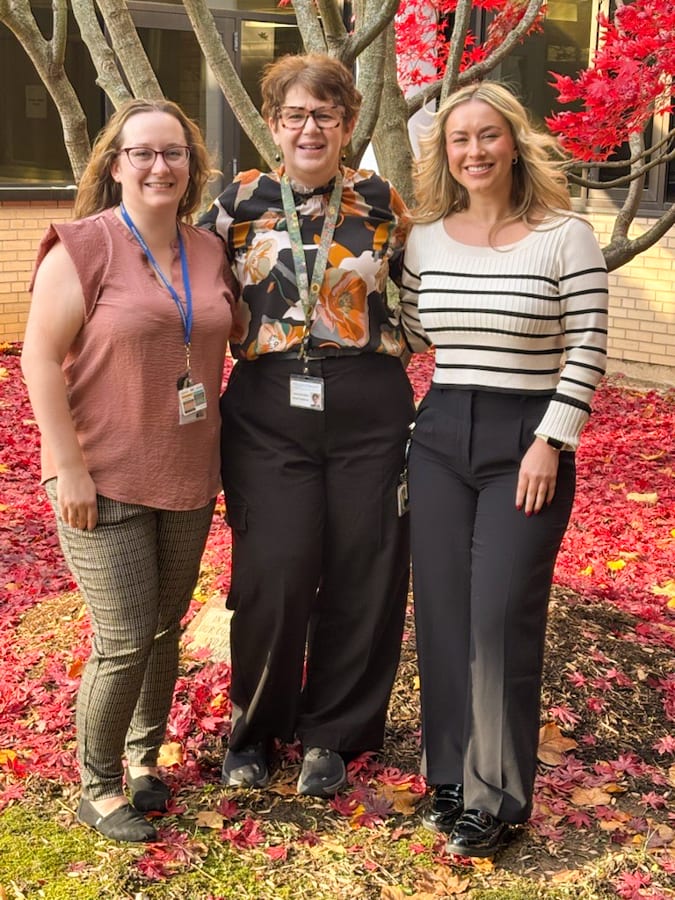We are Niagara Health is a series of stories that celebrates the incredible people working and volunteering in our organization and how they make a difference in the lives of patients and coworkers every day.

When Lauren Oreskovich walked into the Niagara Falls Hospital four weeks ago as a newly minted Nurse Practitioner in the Stroke Program, it was a full circle moment.
It was in the same building, as a teenager visiting the Emergency Department, that Oreskovich first met a Nurse Practitioner and discovered her own professional calling.
“Becoming a Nurse Practitioner was always my path,” Oreskovich says. “It’s a surreal moment because I have always wanted to be a Nurse Practitioner since high school.”
Oreskovich might just be Niagara Health’s newest member of the profession after following that path to get here.
After earning her nursing degree at McMaster University, Oreskovich spent two years as a Registered Nurse (RN) in the Niagara Falls Emergency Department. During that time, she was often part of the very front lines of care for patients experiencing a stroke and coming to the Niagara District Stroke Centre at the hospital.
As soon as she clocked the required RN hours to become a Nurse Practitioner, she applied – and got accepted – to do her master's at McMaster, all while continuing to work in Niagara Falls.
Oreskovich’s performance on the job and her career trajectory impressed Stroke Program Manager Leanne Kent. When an opening for a Nurse Practitioner in stroke care coincided with Oreskovich’s graduation, Kent encouraged her to apply.
“It was my goal to work here,” Oreskovich says. “I really hoped a job with Niagara Health popped up here. It all worked out perfectly.”
Now, just a month into the role, Oreskovich is settling in – mentored by veteran Nurse Practitioner in the Stroke Program, Charmaine Martin-Gaspar and joining new Nurse Practitioner Ashley Kehoe – and putting her advanced practice skills to work in the very place that inspired her.
"The Nurse Practitioner model is great because you use bedside nursing experience and advanced practice that builds on medical knowledge, with the autonomy to prescribe treatment and order tests.”

She works with neurologists and others in the program on stroke protocols for patients, helping to establish immediate plans of care. She also rounds and assesses the neurological status of inpatients, collaborates with hospitalists and Allied Health team members, and creates care plans beyond the hospital.
“Our biggest goal in the stroke program is to figure out why the stroke happened and try to prevent it from happening again,” Oreskovich explains.
“It’s a very holistic approach that Nurse Practitioners can bring to care along with medical aspects, and that’s why they play such a critical role on the team. The Nurse Practitioner model is great because you use bedside nursing experience and advanced practice that builds on medical knowledge, with the autonomy to prescribe treatment and order tests.”
At one time, Nurse Practitioners didn’t have the scope of practice they do today, she notes. As the role they can play in healthcare has become clearer, they’ve been given expanded authorization to perform certain procedures, and prescribe treatments and medications.
Reflecting that evolving – and critical – role, the number of Nurse Practitioners in Canada has doubled in the past decade to 11,562, according to NP Circle, a digital education hub and community for Nurse Practitioners. More than half of those practise in Ontario.
Oreskovich is hopeful more people will be inspired to join those ranks, much like she was.
“Because our scope of practice is changing and expanding more, there will be more opportunities for the profession to grow,” she says. “I’m so grateful to be in the role I’m in and that my learning has been supported, and I can make a difference in people’s lives.”
Niagara Health celebrates Nurse Practitioner Week 2025, which recognizes the important work Nurse Practitioners do and the contributions they make to healthcare.

